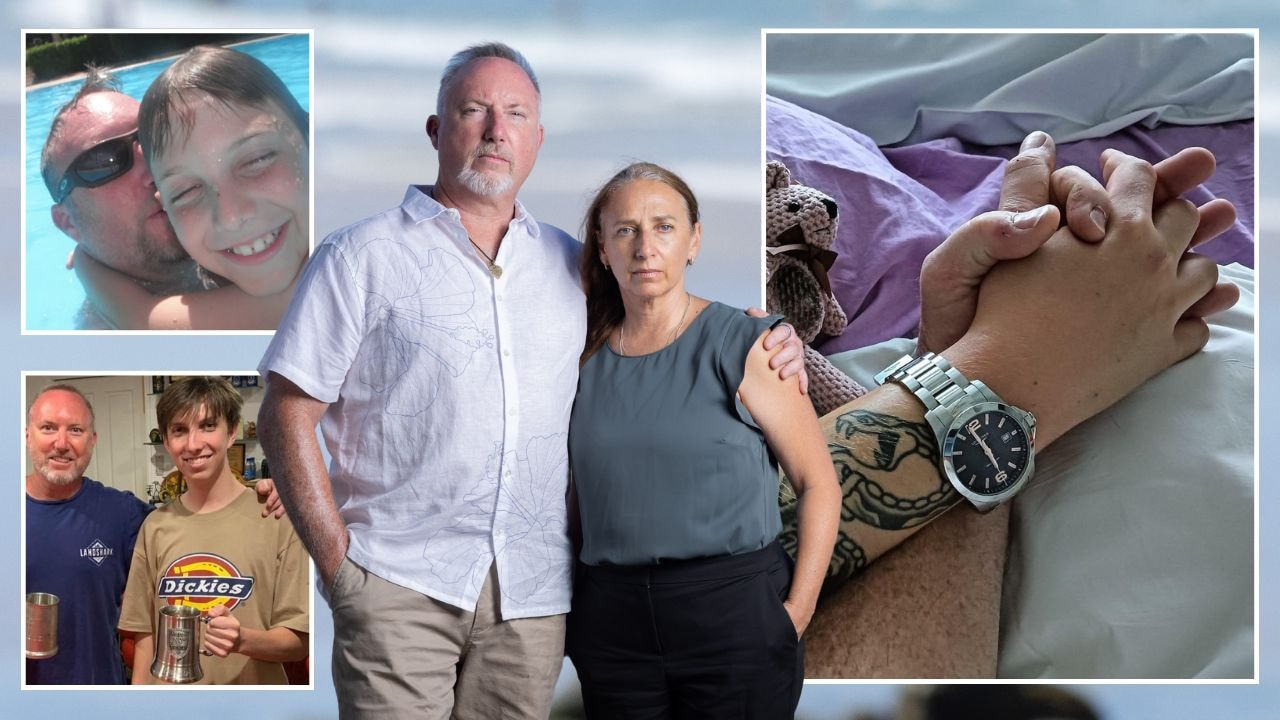‘Struggling to stay afloat’: Bindi Irwin reveals mental health battle after endometriosis
Endometriosis, a painful disease with no known cause or cure, hits one in nine Australian women. It has been a silent illness for too long.
News
Don't miss out on the headlines from News. Followed categories will be added to My News.
A Wildlife Warrior. A state premier. A beloved comedian. A Miss World. Four women stepping forward to represent millions of others. Bindi Irwin. Annastacia Palaszczuk, Tanya Hennessy, Tess Alexander.
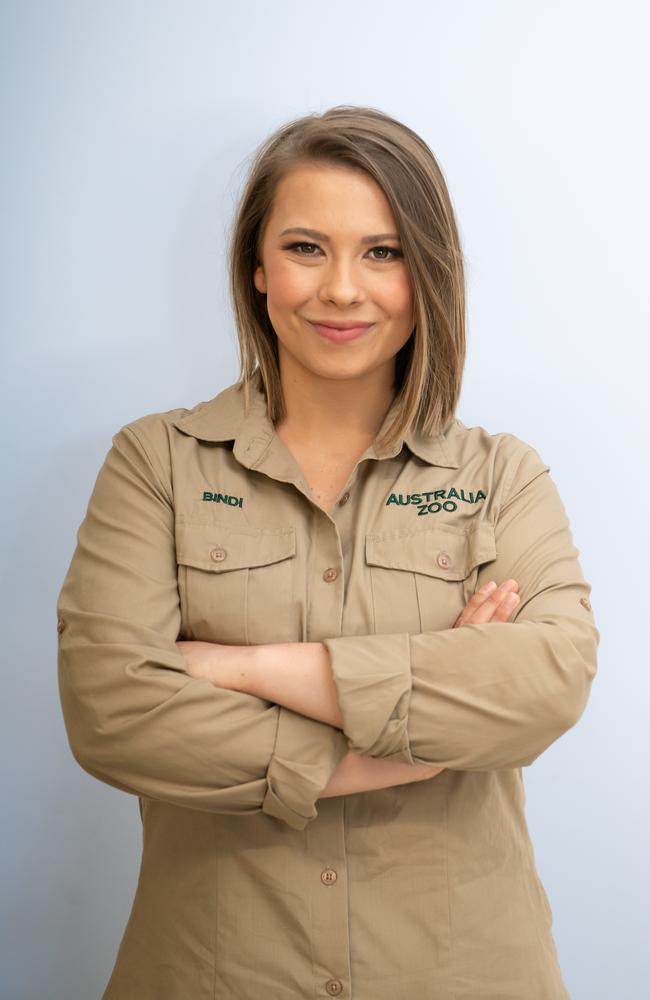
Four women telling their very different stories so that, as Bindi Irwin says, “Someone might read it and think ‘this could be me’.” Or you. Or your daughter. Your mother. Your sister. Your partner.
Because endometriosis affects one in nine women in Australia, and it affects every single one of them differently.
It can cause agonising menstrual cycles, joint pain, back pain, migraine, extreme fatigue, nausea, infertility, painful sex, flu-like symptoms, or pelvic inflammation. It can be visible to the eye, or almost impossible to see. It can hide behind organs, tucked behind the lungs, the bladder, the kidneys.
Its lesions can look like tiny black spots – surgeons call these “gunpowder” – or make ovaries resemble berry-like blisters filled with red, brown or yellow fluid.

It does not behave in the same way each time it presents, and what works for one woman may not work for another. In short, as gynaecology director at Sydney’s Royal Hospital for Women, Dr Erin Nesbitt-Hawes, says, “Endometriosis is not a logical disease.”
What it is, however, is a recognised inflammatory disease where tissue which is very similar to the endometrium (lining of the uterus) occurs outside of it.
As gynaecologist and obstetrician Nesbitt-Hawes explains: “The same sort of cells that we find in the endometrium we find in endometriosis, and the problems start because this tissue is located in places where it shouldn’t be, so the body reacts to its presence in all sorts of ways. For some women, very small amounts of this disease can cause huge amounts of symptoms, and vice versa. And there is no definitive, diagnostic test for it, it’s not like, for example, diabetes, where you can do a test and get a diagnosis. This is one of the reasons why for so long so many women fell through the cracks.”
Another one is because, while endometriosis is not always associated with the menstrual cycle, it often is, and that, Donna Ciccia, director and co-founder of not-for-profit Endometriosis Australia, says is a large part of the reason why for so long this insidious, life altering disease has been a silent epidemic.

“Until really quite recently women did not talk about this, or they were made to feel like it was almost something shameful, because it can be linked to their cycle. Women – and this has been traditionally a very generational thing – were told, even by their mothers, ‘It’s the family curse’ or ‘That’s just what happens in our family’ or they were sent home by their doctors, their concerns dismissed again and again and again, and all the while damage was being done to their bodies, and sometimes their fertility.”
Ciccia has the disease herself (in her diaphragm) and she started Endometriosis Australia in 2013 because she saw a need to “turn up the volume” around it. But she says she was “caught by surprise” at just how far reaching that need was.
“Oh my goodness,” Ciccia says, “it snowballed immediately. It was around the clock, originally run by volunteers, women coming to us for information, for help.
When we started, the average experience for women was to see five different doctors before they got a diagnosis and it took an average of between seven to 12 years for that diagnosis. Now the average is six years before diagnosis.
It’s still too long, but the awareness around it has improved so much. We have the 2018 federal government’s National Action Plan for Endometriosis, the medical profession is far more likely to be responsive to it, and we have all these women raising their voices.”
Women like Bindi Irwin. Annastacia Palaszczuk. Tanya Hennessy. Tess Alexander. Silent no more.
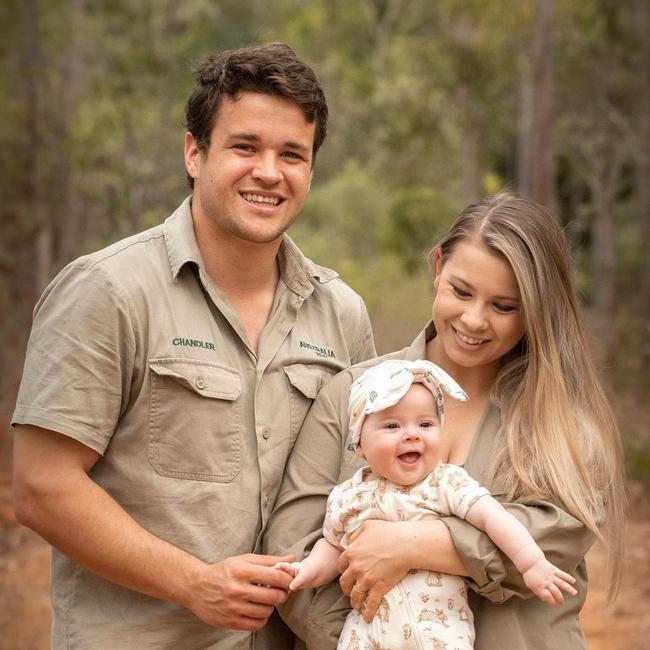
BINDI IRWIN, 24, WILDLIFE WARRIOR, PRESENTER, ADVOCATE
Signature khaki uniform. Crimped hair. A tiny girl with a corn snake looped around her fingers, or speaking in a clear voice full of love at her father Steve Irwin’s funeral service in 2006.
It seems like we’ve known Bindi Irwin forever, and to millions of visitors to Queensland’s Irwin family-owned Australia Zoo, or the millions of viewers around the world watching any of her family’s wildlife specials, she has always been the girl with the brightest smile.
But from the age of 14, behind the scenes, Bindi Irwin was in pain. Crippling, stabbing pain that left her doubled over in pain.
Pain that sent her looking for answers, visiting doctor after doctor, undergoing blood tests, CT scans and ultrasounds until one doctor told her “it was just part of being a woman”, and she stopped looking.
Now married to her long term partner Chandler Powell, it was the birth of their daughter Grace in 2021 that spurred her to take up her search for answers again.
Because she was in so much pain she couldn’t get off the floor to reach her baby daughter in her crib. Sometimes she vomited with nausea. Sometimes, she says, “she struggled to stay afloat” Every person’s endometriosis story is different. This is Bindi Irwin’s.
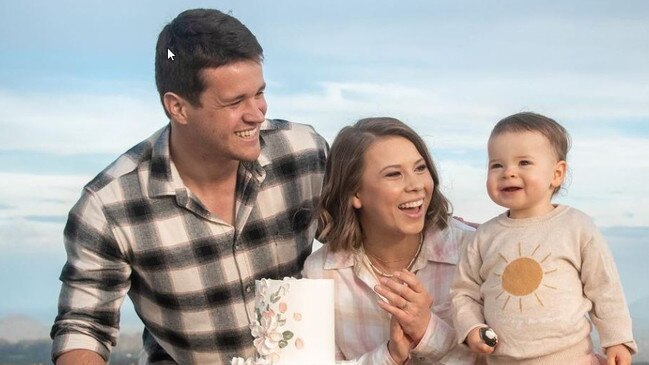
My endometriosis symptoms started over 10 years ago. My doctor told me that I have quite an aggressive form of the disease. Many people think endometriosis only affects women while they are on their period, this just isn’t true. I had debilitating pain, fatigue and nausea on a daily basis. Looking back, I suffered from at least one of these symptoms every day since I was 14 years old.
It felt like I had varying degrees of the flu with added pain, every day of my life. It took me 10 years to be diagnosed and I felt dismissed by many, many doctors. Not knowing why I felt so ill and being told it was just my hormones, age, time of the month, was difficult to process. Only a handful of people in my family knew that I was in so much pain for all those years. It was easy to get really sad and they kept me going.
When I had Grace, my symptoms got worse and seemed to snowball. My mental health was being shaken because I so desperately wanted to be the best mum for her, when some days I couldn’t get out of bed. She’s the reason I had the strength to seek help. Reaching out to my dear friend, Leslie Mosier, I was set on a path to find answers. She was diagnosed with endometriosis and it took her years to find the right medical treatment. I learned from her that excision surgery is the gold standard of treatment, not ablation. I feel like more people need to know this, and our medical system for treating this disease needs help.

I really want to tell people to keep searching for answers. No matter what, don’t lose yourself in this disease. Over the years, I’ve cancelled hundreds of plans and left people wondering why I wasn’t showing up. Behind closed doors I was struggling to stay afloat. It’s not okay to be made to feel like crippling pain is normal. It is not normal and you deserve better.
There is definitely a stigma around endometriosis and yet millions of women suffer from its debilitating effects. This disease makes you feel lonely and isolated as it can take years and years to be diagnosed, and I’m sure many never get the diagnosis they require.
Knowing this, I felt it was incredibly important to share my journey. My hope is that my story gives others the validation that their pain is real and they deserve answers, support and treatment.
Bindi Irwin opted for excision surgery in December 2022.
This type of surgery is keyhole, laparoscopic surgery wherein doctors are able to see and magnify the lesions or inflamed tissue cells which are then cut out using an electrical device. While it is considered, as Bindi says, the gold standard treatment, other options include ablation – where the lesions are burnt off using a laser or electrical current – or hormonal interventions such as the contraceptive pill, hormone injections or Intrauterine Devices (IUD) such as a Mirena.
These IUDs are inserted into the uterus and release the hormone progestin which reduces the severity or completely stops periods.
Nesbitt-Hawes says other treatments include holistic strategies such as acupuncture, or TENS (Transcutaneous electrical nerve stimulation) machines which deliver small electrical currents through the body and may help with pain relief.
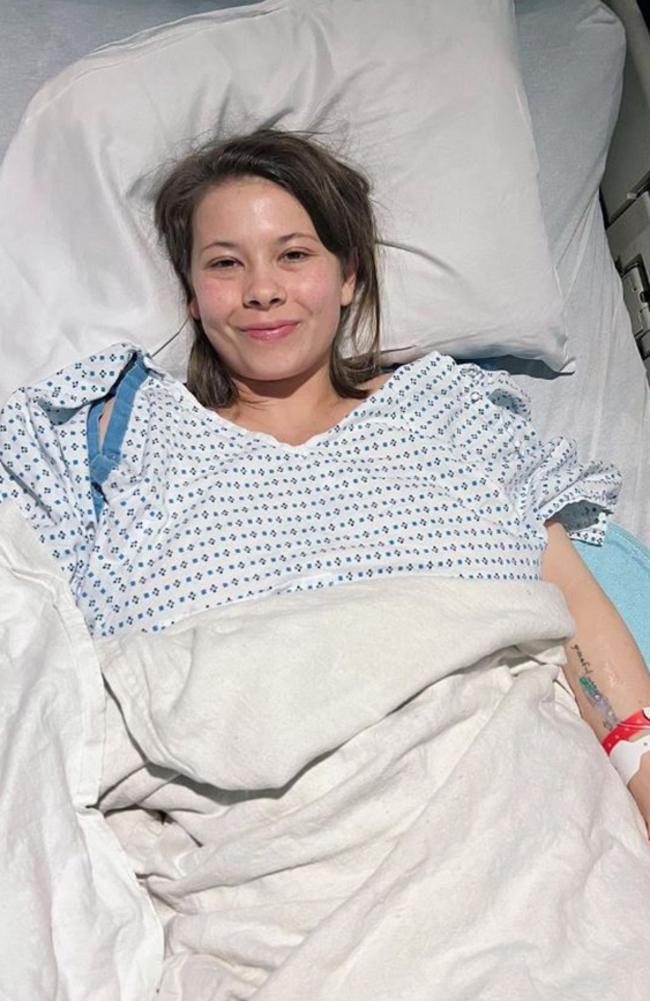
“Some women find physiotherapy helps, because some women have such shocking pelvic pain, their pelvic floor goes into spasm, and often for these women sex is very, very painful,” Nesbitt-Hawes says.
“There is a current perception that ablation is not as good as excision, but it has given some women really good results. The important thing is to give each woman informed choices so that they can choose the treatment that’s best for them.”
For Bindi Irwin, that was excision surgery where doctors discovered 37 lesions and a so-called chocolate cyst (filled with dark brown endometrial fluid) on an ovary.
Six months after her surgery, Bindi is feeling much better, and loving being the best mother she can be to Grace.
She is thankful, too, that she has a child. Not every woman with endometriosis is able to, or struggles, to conceive. Endometriosis affects the fertility of 30 per cent of the women who have it. Women like Queensland Premier Annastacia Palaszczuk, who didn’t know she had the disease until she miscarried her child.
Every woman’s endometriosis story is different. This is Annastacia Palaszczuk’s.
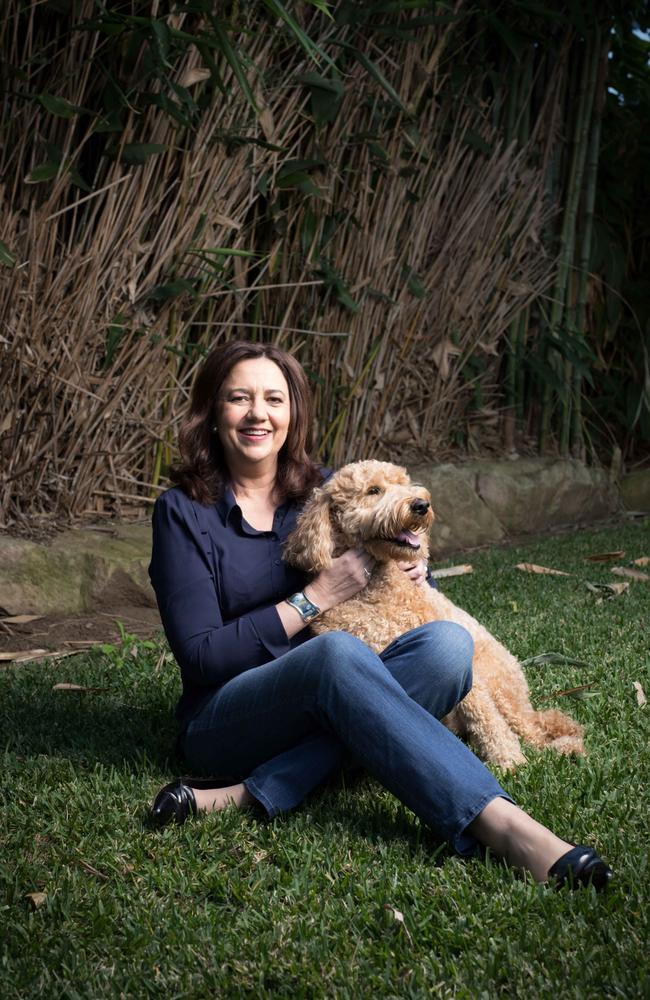
ANNASTACIA PALASZCZUK, 53, PREMIER OF QUEENSLAND
During her early political life, sometimes Annastacia Palaszczuk would ask staff how long the walk was to a meeting, or an event. From her car. From her office. From here to there.
Because there were some days she knew she wouldn’t make that walk if it was too long. There were some days she couldn’t walk at all. Because of her crippling pain. Her extremely heavy periods. Her terrible headaches. Her utter exhaustion.
“I would ask my staff, ‘how far is the walk?’ and have to plan ahead. When I look back on that time I actually don’t know how I did my job. I didn’t take one single day off, because that was what you did. You soldiered on. You didn’t speak about it. No one did. You just thought it was normal, to feel that way.”
It wasn’t until Palaszczuk, at 34 years old, lost a much longed-for baby at 11 weeks that she discovered she had endometriosis, and it had affected both her fertility and ability to carry a child to term.
“I had no idea,” Palaszczuk says now, and all these years later, her voice still carries the sorrow of her loss, and all the pain of those years.
I was in real agony at times, and I never thought to ask why back then. We just didn’t, and doctors at that time didn’t really ask or question why your periods were so debilitating, why it took every ounce of your strength to get through a day, why some days you couldn’t stand up properly, either. I started experiencing my symptoms in my 20s and later, in my 30s when I lost my baby, we thought (at the time Palaszczuk was married to then-political staffer Simon Every, now with the Clean Energy Corporation) I would be able to have another child because I had managed to fall pregnant. Instead, when I had the miscarriage the doctor said, ‘You have endometriosis and you have to have an operation.’
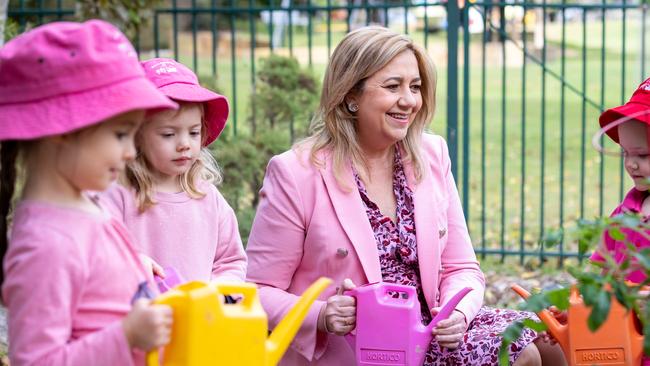
I underwent two operations, and it turned out my endometriosis was under my lungs. We did try for another child for the next four years or so with IVF but it wasn’t successful and I remember being told that the baby I had miscarried was most likely my “one shot” at having a child, and it was very hard to hear. I wish I’d got a diagnosis much earlier, I might have been able to do something.
I look back now and realise my mother had the same symptoms, one of my sisters also.
In my 40s I was given a Mirena. It has been a godsend to me, it has changed my life, and I wish I’d known about that earlier too. I just want to say to people to please get help, please ask your doctor to explore your options with you. Talk to your friends, your family, your parents. Where there was once nothing but ‘oh just go and have a lie down’, there is now so much information and help available. Please don’t suffer in silence.
Damaged eggs. Sticky uteri. As Nesbitt-Hawes says, the many ways endometriosis can affect fertility are as varied as its symptoms.
“For a lot of women who seek help, their main focus is fertility,” she says.
“In the 30 per cent of women who are affected, there are a few things that will contribute to that, for example, the extent of the disease. If it is severe, it can completely distort the anatomy, it can block off the fallopian tubes.
“It can be very sticky, the inflammation can cause various organs to stick together. In the most severe cases, it causes the ovary, the uterus and the bowel to be completely stuck together. The damage it can do to egg production and eggs can also vary. Ovaries can be distorted, and for many women its impact is in the quality or the number of eggs.”

TANYA HENNESSY, 37, COMEDIAN, TV/RADIO PRESENTER, AUTHOR
Tanya Hennessy is funny. Really funny. Laugh-out-loud funny. And smart. Whip smart. She’s a regular on our screens (Wellmania, Play School, Would I Lie to You, I’m a Celebrity … Get Me Out Of Here).
She’s a best-selling author, with three books under her belt. She’s a podcaster (Hennessy’s Hotline), a social media force with 2.3 million followers across her accounts. She is all of those things, but not the one thing she really, really wants to be.
Because behind the scenes, and beneath the laughs, she is also trying – with her partner Thomas Poole – to have a baby. And they’ve been trying for years.
It wasn’t until August, 2021, that she was told there was a likely reason for her fertility struggles, her endometriosis – which she didn’t know she had.
I remember the moment I was told I had endo perfectly. We had been trying and trying for a baby for about four years and finally a doctor said, ‘Well, let’s just do an internal exam’, and the person who was doing the scan says: ‘Oh, your endo must be really annoying, it’s so bad’ and I was so shocked, I said ‘My what?’ and then she showed me. You could see it so clearly, my whole uterus was covered in it. And I remember thinking ‘Oh, this could explain almost everything.’
I had really bad periods my whole life, but they were getting worse and worse. For me endo is this stabbing, dull constant lower back pain and migraines. And it’s also anger that I wasn’t diagnosed earlier because I would have frozen my eggs when they were undamaged and healthy. I wish I had known at 30, I wish I knew back then even to ask the question, ‘Could I have endometriosis?’, because I did have it, and all those years it was damaging my eggs and my ability to conceive.

I had endometriosis surgery in May last year, but it’s all grown back, and in a different place. Now it’s on my kidneys. I am weighing up whether to have another operation, because the last one didn’t help me. In fact, my endometriosis has become worse. But on the positive side, I’m so glad it’s out in the open, articles like this, women talking about it, and the endo community is so warm, so safe and the men in our lives are now so supportive, so understanding. It’s so important to keep talking to each other, asking questions. I know there are whole tribes of women out there still suffering in silence. Don’t. Don’t. Don’t.
TESS ALEXANDER, 31, PRESENTER, MEDIA PERSONALITY, HEALTH AND WELLNESS PROFESSIONAL, FORMER MISS WORLD AUSTRALIA
There is never a good time to be unwell, but what if part of your job is to be glamorous? What if you’re on the world’s stage but every step you take is painful and your flower face is marked by cystic acne?

That was what happened to now-presenter, health and wellness professional Tess Alexander, in 2015 and a newly minted Miss World Australia. It was, she says, “incredibly stressful”.
Tess would discover her acne was caused by polycystic ovary syndrome (PCOS) which causes an excess production of androgen, a male hormone. It made her hair fall out, her skin break out, and tiny cysts “like raspberries” grow in her ovaries. Sometimes, they burst. Then, in 2017, she was diagnosed with endometriosis, an oestrogen – female hormone – based disease.
So every day she walks a delicate line between the two, trying to treat one, without inflaming the other.
When I was about 27, I started to experience an astronomical amount of pain. I can’t describe it, but it was so debilitating, I have passed out from it. I got the great advice to log it, and I began to see a pattern. It was this clear arc up until my period, this build-up of pain, then one week of hell during it, and one week after my period free of symptoms.
I went to my doctor, thinking it was related to my PCOS, but the doctor said it was more likely endometriosis. So I booked in for keyhole surgery in October 2021, and they found it (endometriosis) on my sciatic nerve, in my bowel and in my uterus. They excised the tissue and lasered it off, but because I have PCOS and some auto-immune disease, this causes inflammation in my body which is a great breeding ground for endometriosis to grow. So far, I haven’t been able to address my sciatic nerve pain. A year or so after my surgery I thought I would be so much better than I am, and part of me dealing with this is just dealing with the emotional toll of chronic pain.

For me, endo is like this passenger I carry with me all the time, and sometimes it is 95 per cent of me, and sometimes it is five per cent of me. But it is always a part of me. I plan for it everywhere I go, I always have an emergency pack of prescription pain medication with me, and a portable heat pack. Pain is the undercurrent of my life, and I feel very lucky that my partner (Kieran Ryan, 25, partnerships director for men’s mental health organisation, Movember) is very understanding and supportive. With both PCOS and endometriosis, fertility is an issue, and I guess that’s a bridge I might have to cross one day.
In the meantime, I really want to say to any girl experiencing this, that I understand the stigma that can come with it. But if you are in pain, you have to speak up. Please don’t listen to anyone, even if it’s your own mother, who says ‘Oh it’s just your period.’ Get help. Raise your voice. Raise your concerns. Have the conversation.
For Nesbitt-Hawes, it’s a conversation she has seen change dramatically, even in the last five years.
“For a long time many doctors felt out of their depth in discussing endometriosis,” she says. “The good news is there has been this huge movement in terms of general practitioner education.”
A huge part of that, Nesbitt-Hawes says, is women raising their voices. The other part is because, finally, someone is listening.
endometriosisaustralia.org
More Coverage
Originally published as ‘Struggling to stay afloat’: Bindi Irwin reveals mental health battle after endometriosis



